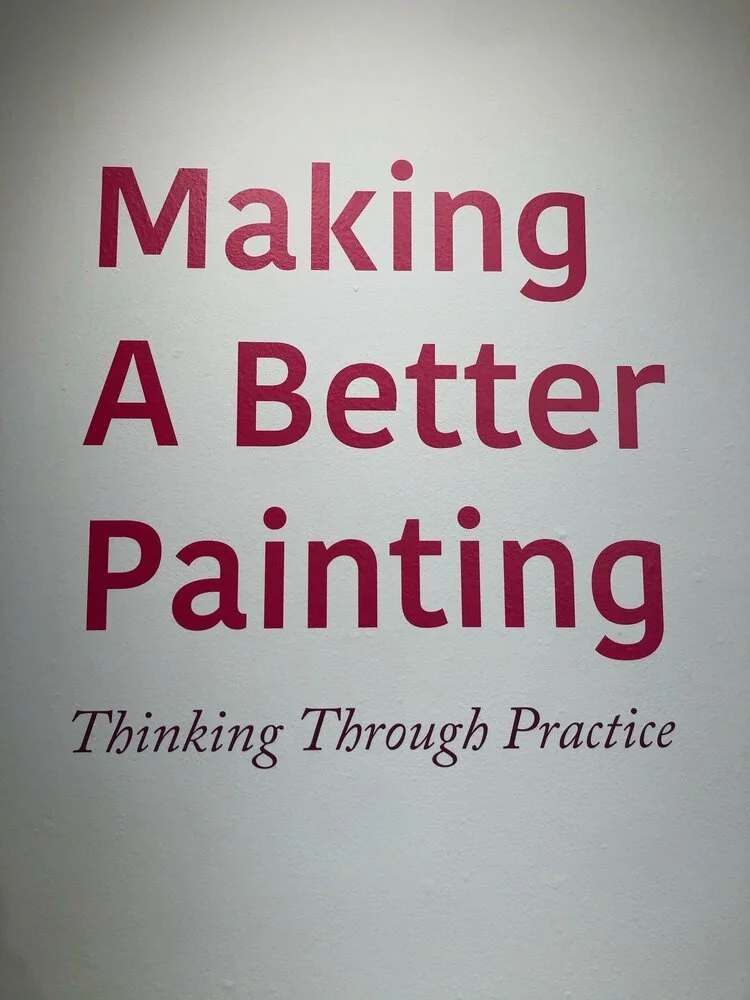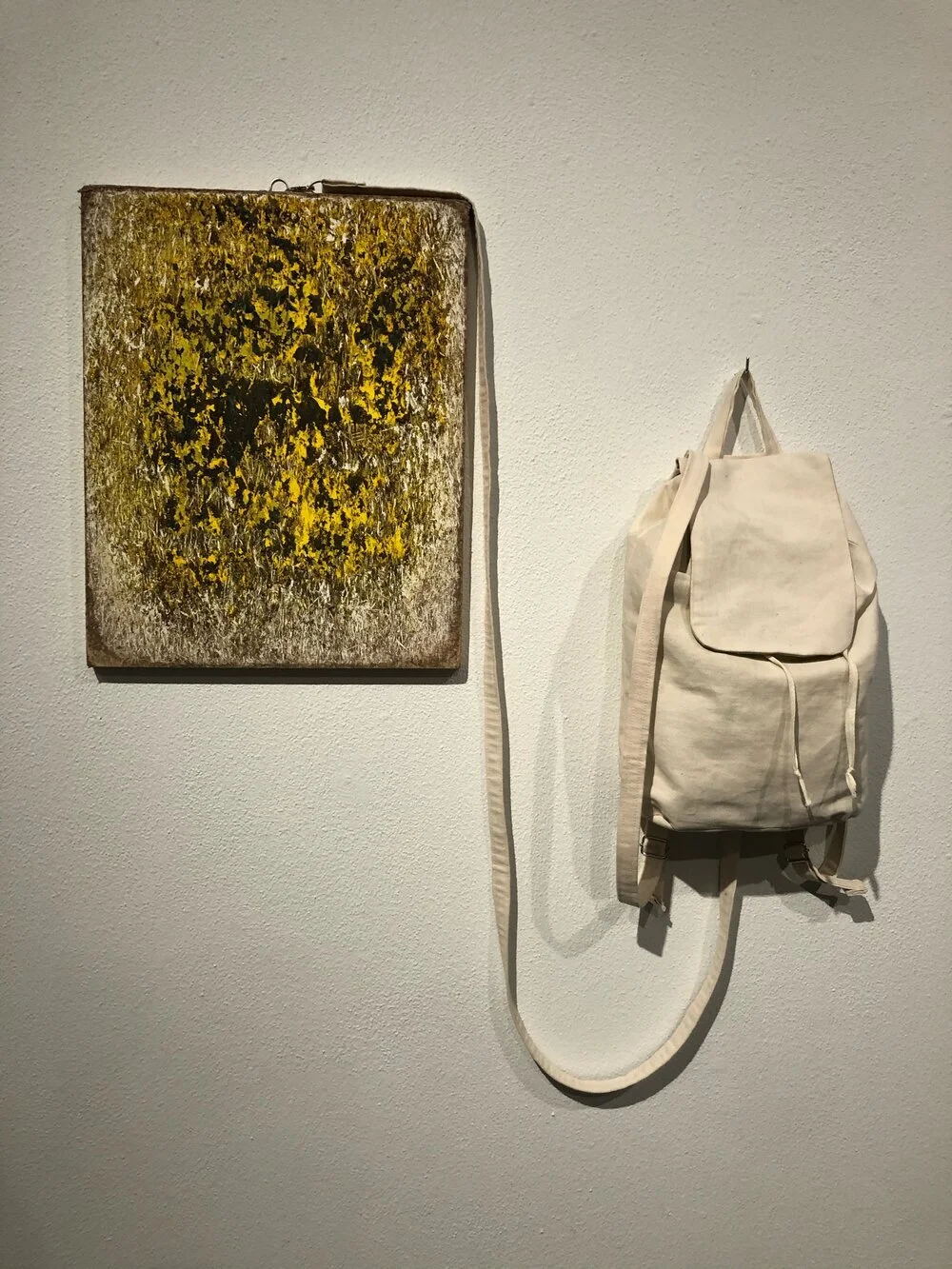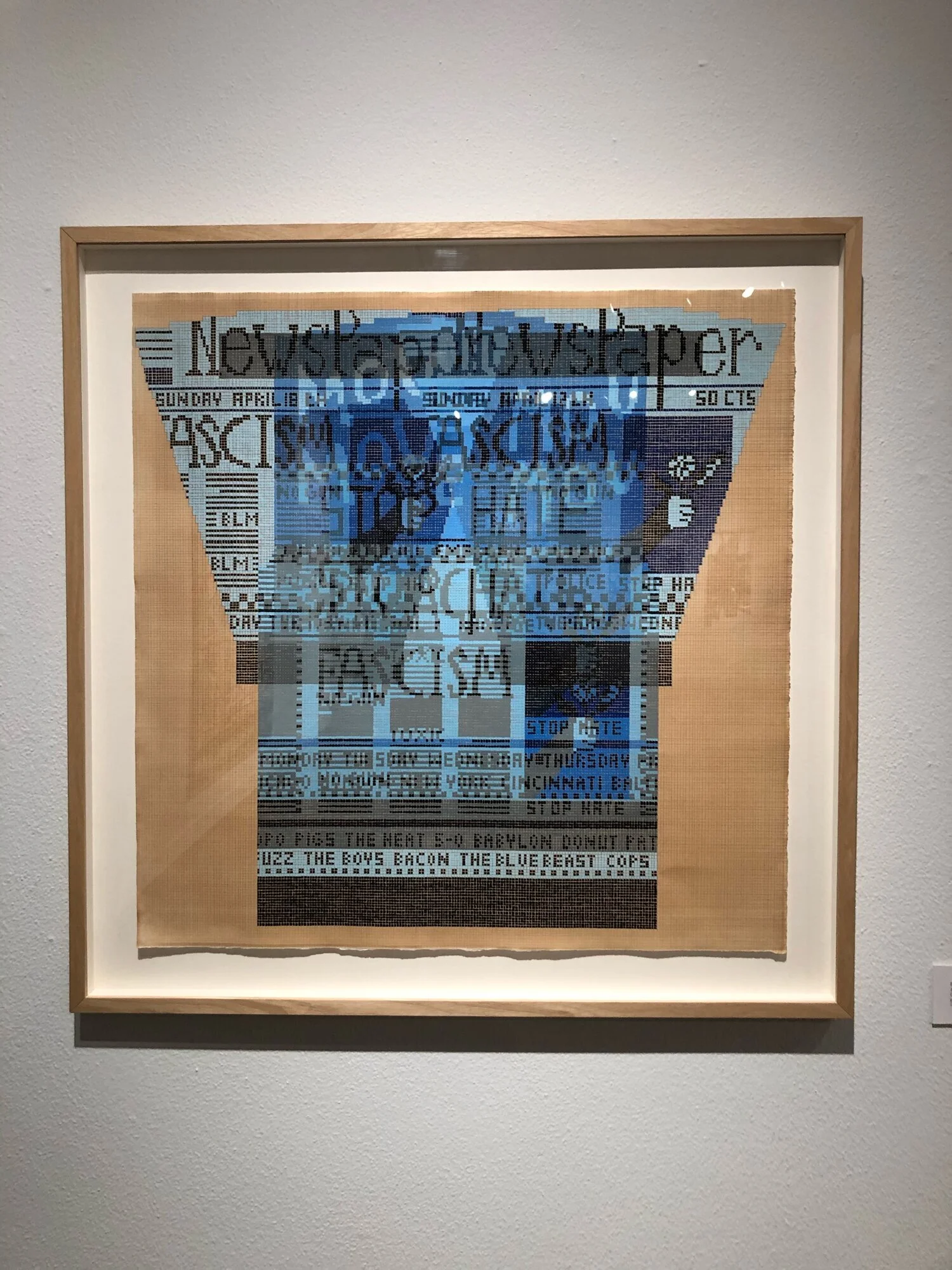Painting At Its Best
February 4, 2020
MAKING A BETTER PAINTING AT LEWIS AND CLARK’S HOFFMAN GALLERY, JANUARY 23-MARCH 15, 2020
Making a Better Painting: Thinking Through Practice examines the “absurdity, passion, and even shame” of being a painter today. It is an ambitious survey of contemporary Northwest Painters, and exemplifies the regional shift in artists’ ambition we’ve witnessed over the last decade: each of the 18 artists make a living largely outside of this region. The team of 8 curators have created a show that positions painting as a methodological tool, or framework, for investigating Painting itself, Technology, the Anthropocene, and Politics. These four categories form the organizational basis for the exhibition, which seeks to respond to questions such as “What can be called a painting today?” Or “How do we reconcile artistic practice with political engagement?”
In the wake of the collapse or severe contraction of so many local arts institutions (The Art Gym, Oregon College of Arts and Craft, Museum of Contemporary Craft, White Box Gallery, Archer Gallery, and now Lewis and Clark’s Hoffman Gallery), Making a Better Painting represents the last hurrah of an institution with an uncertain future. The reception and symposium scheduled for the first weekend of March are the perfect chance for Pacific Northwest visual arts communities to come together for some collective soul searching. The symposium’s keynote will be delivered by Molly Zuckerman Hartung, who wrote in her ’95 Theses on Painting,’ that “Painting at its best is utterly demanding, cruel, and hopeful,” and Making a Better Painting is certainly Painting at its best.
Margie Livingston
There are works by Seattle artist Margie Livingston, whose most recent solo show, Circumambulation, opened last year in Tasmania. She has developed harnesses with which to drag paintings behind her on walks through local terrain, a process she calls Extreme Landscape Painting. Livingstons’s earlier works began as white panels, building up marks as the paintings scraped the Earth. Lately, however, the panels begin as layers of paint, allowing the ground to reveal colors through gouging and dragging. “Positioning the painting in intimate contact with the ground, turning its face away from the human viewer/maker,” write Cara Tomlinson and Tia Factor in the exhibition essay, “creates a conversation with the earth— one that questions one-point perspective and the promise of escape in landscape painting.” Through this work, Livingston has found a way to begin decolonizing the practice of painting.
Ellen Lesperance
Portland artist Ellen Lesperance, who is opening her first solo museum show this month at the Baltimore Museum of Art, has two gouache on paper paintings in this show. Her work recreates historic knit garments worn by women at protests, sit-ins, demonstrations and during other acts of civil disobedience.” Rendering these radical textile patterns in paint and framing them on a wall subverts the hierarchy between high and low art or domestic and fine art. For her, and other artists grouped under the political rubric of the show, “artistic practice is a form of political engagement.”
Anthony White
Anthony White, who at 25 just closed a solo show at London’s Public Gallery and already has a long waitlist of collectors, is showing two maximalist still lives of 21st century consumer junk, rendered in melted plastic. White writes that his work “disrupts hierarchies of status and wealth,” by situating lowbrow objects in highbrow settings. Some of the objects featured include a KFC bucket, a bottle of Jose Cuervo, Robitussin, Bud Light, Lubriderm, cigarettes, and a whipped cream can— all of which speak to the recent prevalence of a sort of youthful nihilistic hedonism.
Making a Better Painting is on view at Lewis and Clark College’s Ronna and Eric Hoffman Gallery of Contemporary Art through March 15th, with a reception and keynote March 6th, and an all-day symposium March 7th. Registration is free but mandatory. Regular gallery hours are Tuesday through Sunday, 11 a.m. to 4 p.m. The gallery is free and open to the public.
[unlinked quotes are from the catalogue essays. all photos my own.]




